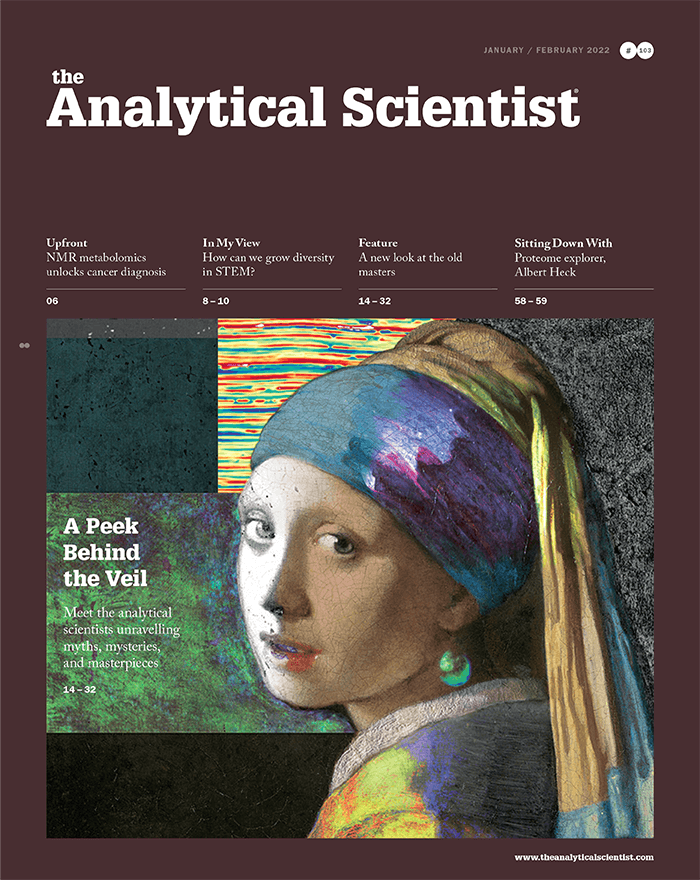2013
We celebrated the self-effacing giants of analytical science with our very first Power List! And what a line up we had. John Yates III chopped the charts, and reflected on his biggest accomplishments: “There are two, and they are connected. One is the development of software methods to search tandem mass spectrometry data for sequence databases. That enabled the other, shotgun proteomics, which allows large-scale analysis of proteomes.”
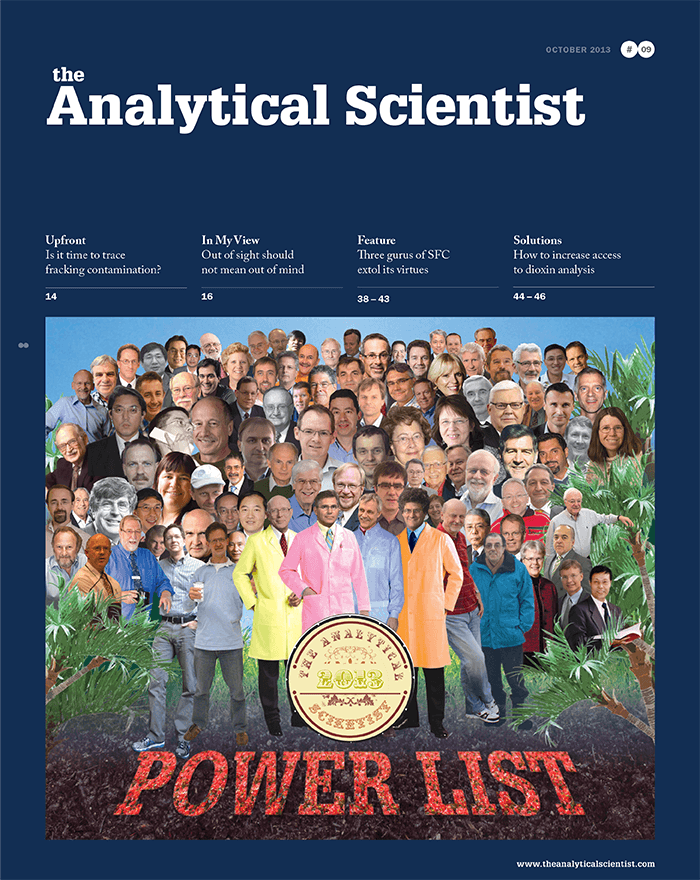
2014
For our July 2014 feature, we showcased a magical cartoon where three wizards cast a new sample prep spell. The three wizards – Hans-Gerd Janssen, David Benanou, and Frank David – discussed the importance of good sample preparation, and contemplated whether a change was due in sample preparation protocols. “It may be a controversial view but I believe that minimizing the need for sample preparation is seen as a positive by manufacturers as it enables them to sell the latest innovations in other areas with “no sample prep needed”! Unfortunately, the vendors are often more interested in selling systems than promoting real analytical chemistry.” Read more!
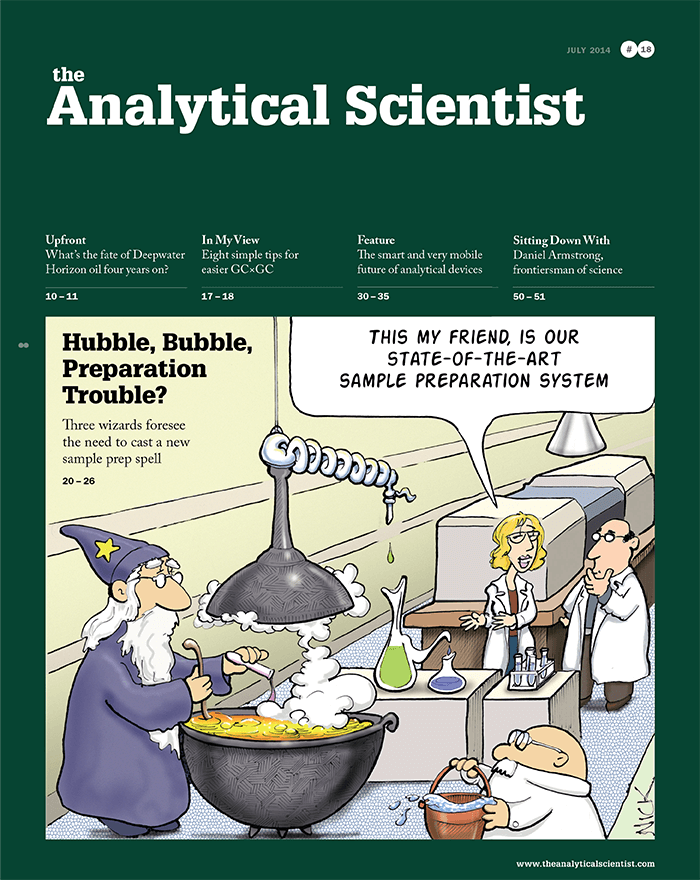
2015
Our July 2015 cover saw hazmat-suited scientists using miniaturized spectrometers to assess incident severity. For this feature, Heinz Siesler discussed developments that mobilized Raman, mid-infrared and near-infrared spectroscopy for a whole host of innovative handheld applications. The key question – is handheld spectroscopy better or worse than traditional benchtop approaches? Neville Broad weighed in: “I would say in general, handhelds are not quite as good as benchtop instruments; however, their resolution and performance are sufficient to provide cost-effective results. In reality, they are complementary tools and not intended to replace superior technology, or more specific analytical techniques, such as mass spectrometry for the confirmation of unknowns.”
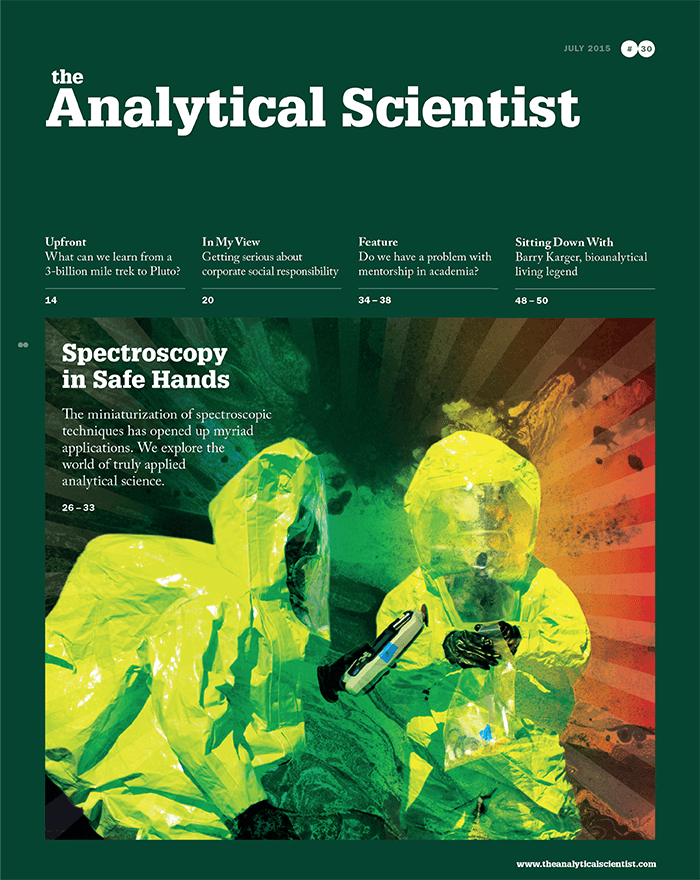
2016
In January 2016, we dove deep with ocean robot Alvin to solve some of the blue planet’s biggest mysteries. Rob Munier discussed how analytical tools could supplement active areas of oceanographic research. “Accelerator mass spectrometry (AMS) is used for radiocarbon dating of fossils. In fact, we operate the National Ocean Sciences Accelerator Mass Spectrometer (NOSAMS) facility at Woods Hole, which is a resource used by the entire oceanographic community.” Read on!
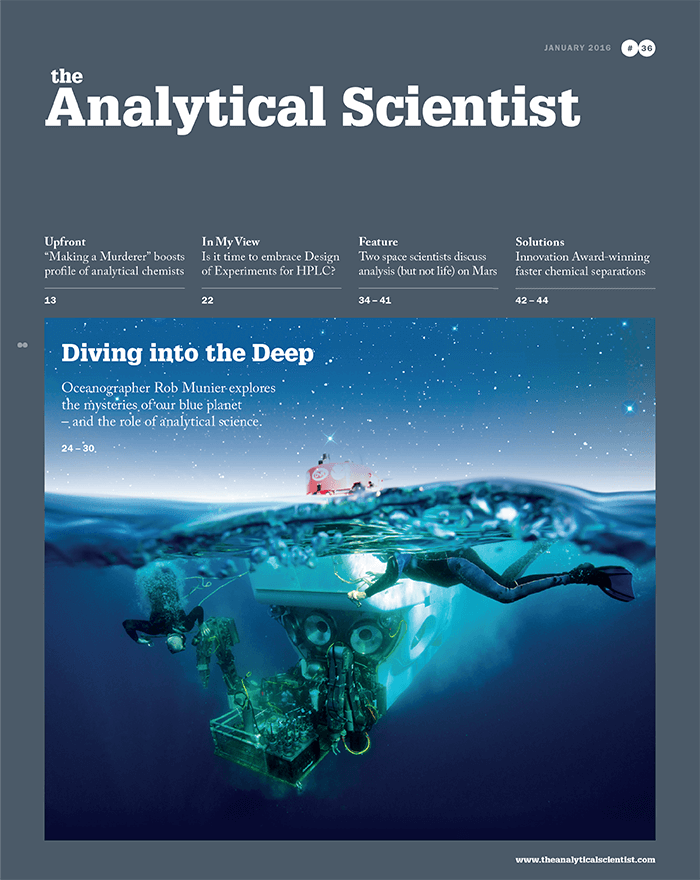
2017
For our April 2017 feature, Pierre-Hugues Stefanuto and Jean-François Focant discussed the potential of GCxGC as a forensic tool to sniff out the smell of death. “The headspace of a decomposing body contains hundreds of different compounds, from most chemical families, and over a large dynamic range. Moreover, the dynamic nature of the decomposition process itself further complicates the design of VOC signature experiments. Thus, our first goal was to optimize our GC×GC-TOF MS method to perform non-targeted screening of the decaying pig headspace at various stages of decomposition.” Follow the story here.
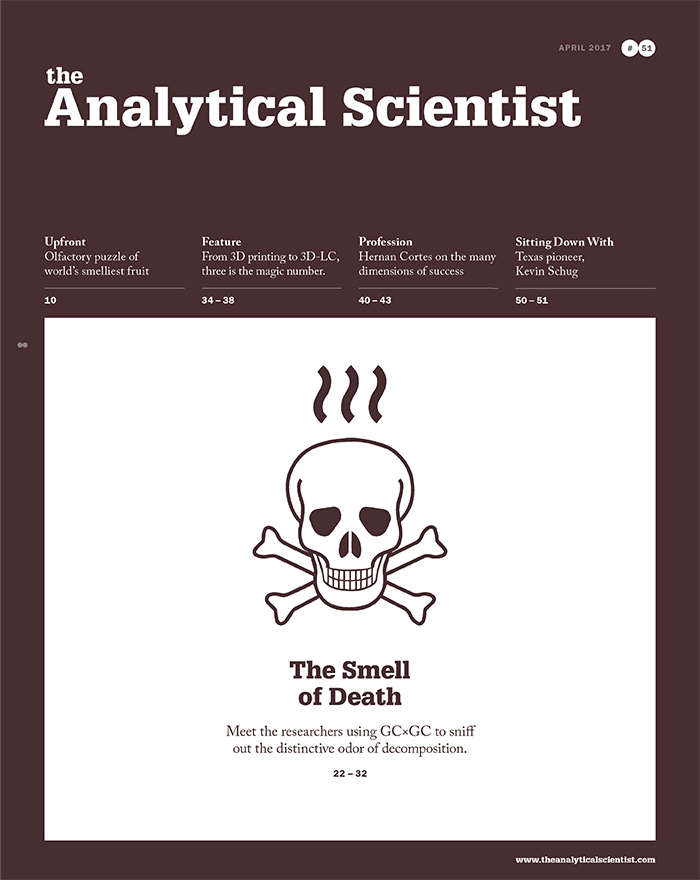
2018
For our June 2018 issue, we sat down with gurus of chromatography to explore some exciting advances in separation science, and peeked at their LC wishlist. “This Christmas, I wish Santa would bring me a really sensitive on-column UV absorbance detector with a physical diametric path length of 25 microns or smaller.”
Read more.
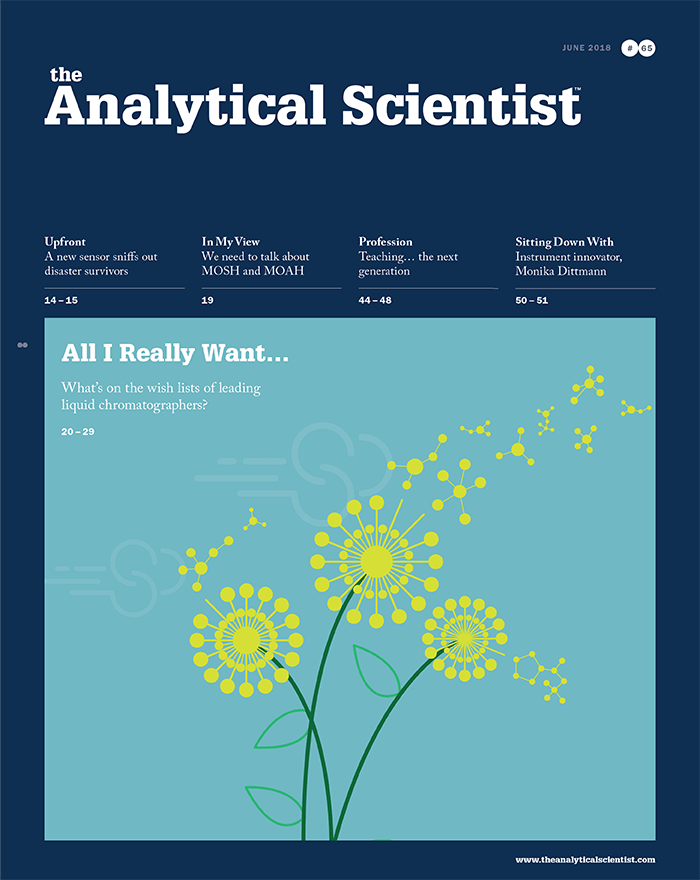
2019
Our March 2019 cover feature showcased an AI-inspired tribute to the artwork for Kraftwerk’s classic 1978 album, The Man Machine. We asked a group of analytical experts whether intelligent instrumentation and automated workflows were a window of opportunity – or a threat to our future. “For routine, set work flows, where there is a consistent throughput and a good return on investment, adoption of automation seems to be a sensible approach. The simplicity or complexity of automation should be dictated by need and indeed ambition – we do not advocate for automation for the sake of automation, but where it adds real value.” Read what else Bob Boughtflower and Paul Hopkins had to say!
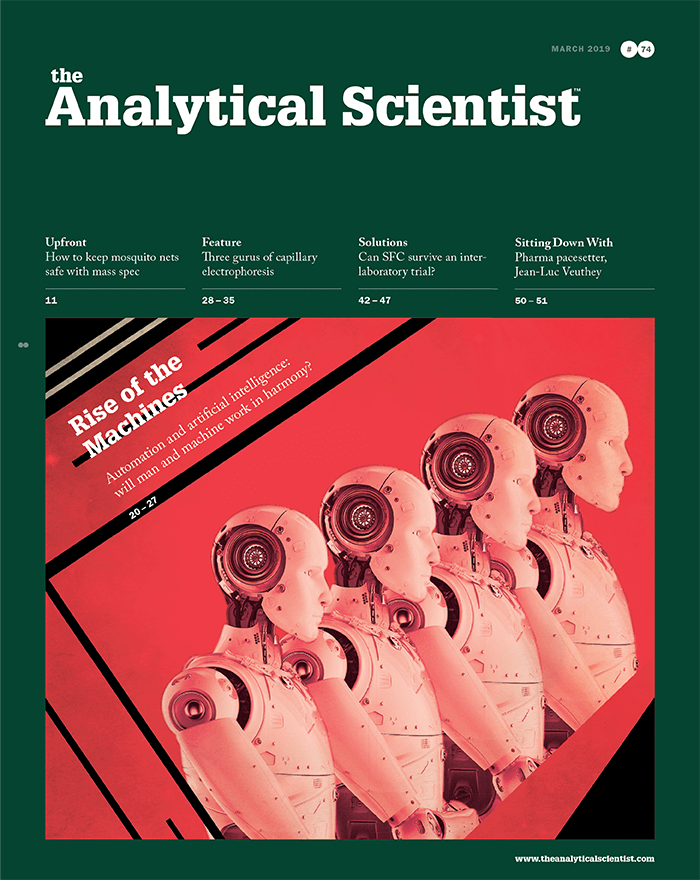
2020
In May 2020, we published our first COVID-19 cover, where Michaelangelo’s “The Creation of Adam,” was adapted in line with policies of social distancing amidst the pandemic. We spoke with numerous professors about how education and communication platforms were keeping up with the chaos. “Teaching is still a challenge, with motivation being a real struggle for both faculty and students. After all, how important is ‘this assignment’ or ‘that test’ in light of a pandemic?” Read more perspectives!
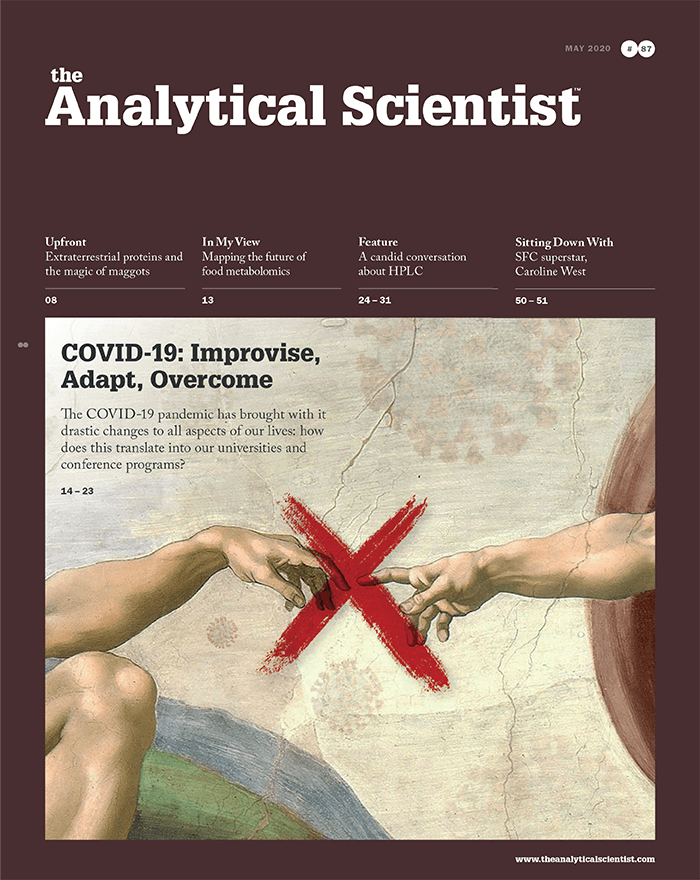
2021
Our May 2021 cover feature pictured a 3D rendering of the carbonic anhydrase spectrum – an ode to Luis Schachner’s MS-based artwork. Schachner discussed his artistic inspiration, the messages behind his art, and just how long one of his prestigious pieces takes to develop. “One day a colleague approached me while I was analyzing a spectrum; she said that I could see things in the data that others can’t. I was inspired by what she said. I decided to start with the data, rather than the (intimidating) blank canvas in front me. Extracting and manipulating the data then triggered my inspiration.”
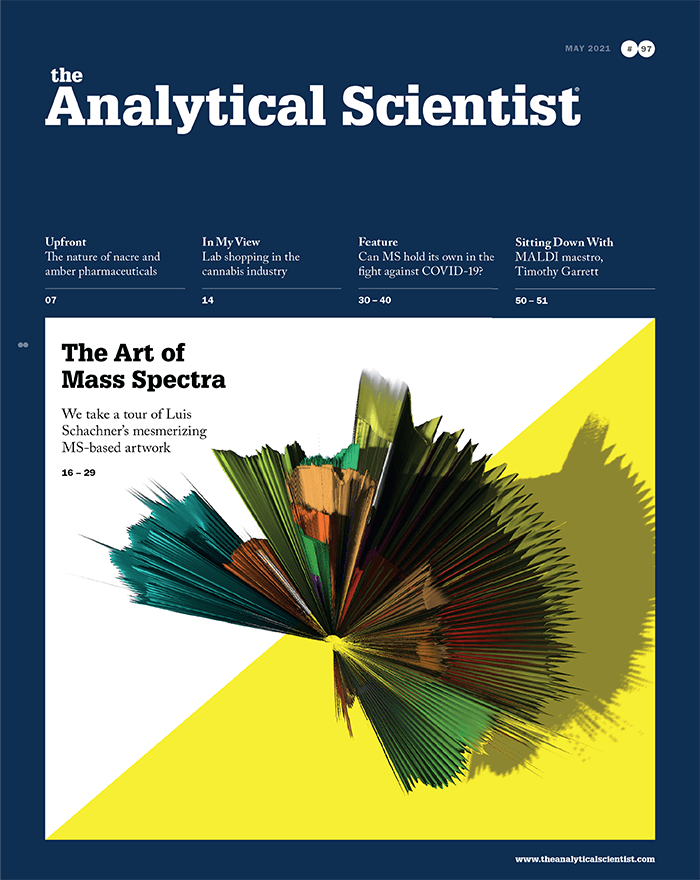
2022
Finally, our February 2022 cover feature was an adaptation of Veemer’s Girl with the Pearl Earring – which formed part of our art analysis feature. We spoke to a bunch of analytical scientists that were working to uncover the secrets behind artistic masterworks. “When you ask questions about the past you have to be open to many possibilities. We can’t rule something out just because our current interpretation of the past is a certain way. More so than many other fields of study there is often only a very limited amount of material available so we must be careful about making general interpretations.” Read more.
